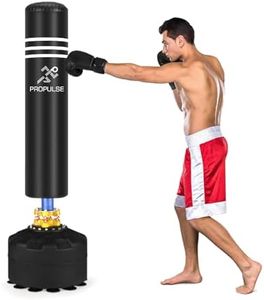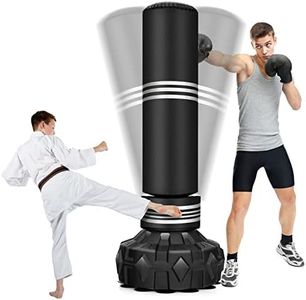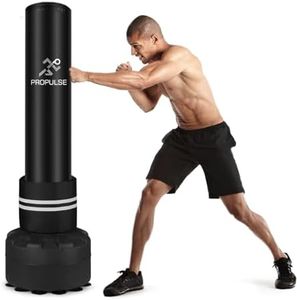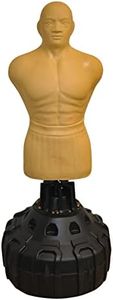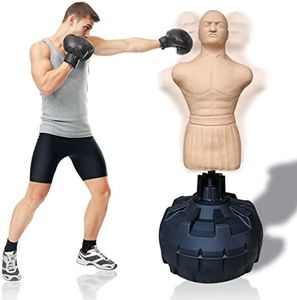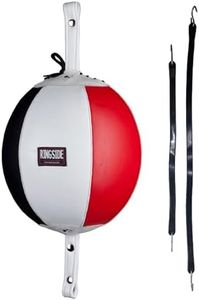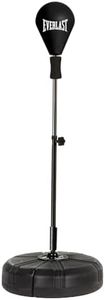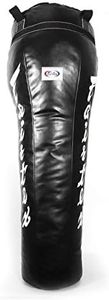We Use CookiesWe use cookies to enhance the security, performance,
functionality and for analytical and promotional activities. By continuing to browse this site you
are agreeing to our privacy policy
10 Best Boxing Punching Bag
From leading brands and best sellers available on the web.Buying Guide for the Best Boxing Punching Bag
Choosing the perfect boxing punching bag is all about understanding your training goals, available space, and physical condition. Picking the right bag sets the stage for safe, enjoyable, and effective workouts, whether you’re a beginner or an experienced fighter. Before making a choice, think about where you’ll put the bag, how you plan to use it, and what you want to achieve through your training. Boxing bags aren’t one-size-fits-all, so being thoughtful about features and how they align with your routine ensures you’ll get the most value and enjoyment out of your gear.Bag TypePunching bags come in several types, including heavy bags, speed bags, double-end bags, free-standing bags, and specialty bags. Each is designed to train different skills and muscles. For example, heavy bags are used for power and overall striking, speed bags for hand-eye coordination and rhythm, and double-end bags for timing and accuracy. Free-standing bags are often chosen for convenience since they don’t need to be hung. When deciding, consider your main training goal: if you want to build power and stamina, pick a heavy bag; if it’s about improving speed or precision, a speed or double-end bag may be better. Think about your workout routine and match the bag type to your main focus areas.
WeightThe weight of a punching bag affects resistance and swing during use. Standard heavy bags usually range from 40 to 100 pounds or more. Lighter bags (40-60 lbs) move more on impact and help with speed, timing, and technique for beginners or lighter hitters. Heavier bags (70 lbs and up) offer more resistance, suitable for building power and for stronger or more experienced users. As a rule of thumb, an appropriate bag weight can be about half your body weight, but your training intensity and purpose should guide you most. If you’re focused on power and advanced fitness, pick a heavier bag; for learning technique and working on speed and combos, choose something lighter.
MaterialPunching bags are made from various materials like synthetic leather, genuine leather, canvas, or vinyl. The outer material determines durability, feel, and maintenance needs. Leather bags are most durable and provide a premium, comfortable hit, but they require more care. Synthetic options like PU or vinyl are more affordable, easy to clean, and typically wear well for home use. Canvas bags are budget-friendly but might wear faster. Select a material that matches your training intensity and willingness to maintain the bag: if you train often and want longevity, consider leather; for moderate use or easy care, synthetic options are ideal.
FillingThe bag’s filling directly impacts its firmness, weight, and how it feels to strike. Common fillings include fabric scraps, sand, water, or gel. Fabric-filled bags are softer, reduce risk of injury, and are suitable for most users. Sand-filled bags are much harder and heavier, providing more resistance but can be tough on the hands and joints. Water-filled options absorb shock well, offering a more realistic feel and are adjustable in weight. If you’re new or want to avoid hand injuries, fabric or a softer fill is advisable; for seasoned boxers who want toughness and resistance, sand or gel-filled might be better.
Mounting and Space NeedsPunching bags need proper setup—some are hung from ceilings or walls, others are free-standing. Ceiling- or wall-mounted bags save floor space but require secure fixtures and enough clearance all around for unrestricted movement. Free-standing bags are easier to install and can be moved, but take up more floor space and might be less stable under heavy hits. Evaluate your available space and installation capabilities: fixed bags work best in dedicated home gyms or garages, while free-standing bags are great for those needing flexibility or who can’t drill into ceilings or walls.
Bag LengthBag length typically ranges from about 3 to 6 feet. Shorter bags (3-4 feet) are mainly for punching and upper strikes. Longer bags (5-6 feet) are suitable for both punches and kicks, making them ideal for kickboxing or mixed martial arts training. Picking the right length depends on your workout style: if you’ll only be boxing, a standard-length bag works well; if you want to combine kicks and punches, or if you’re tall, opt for a longer model.
